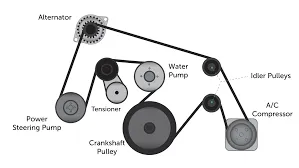- Arabic
- French
- Russian
- Spanish
- Portuguese
- Turkish
- Armenian
- English
- Albanian
- Amharic
- Azerbaijani
- Basque
- Belarusian
- Bengali
- Bosnian
- Bulgarian
- Catalan
- Cebuano
- Corsican
- Croatian
- Czech
- Danish
- Dutch
- Afrikaans
- Esperanto
- Estonian
- Finnish
- Frisian
- Galician
- Georgian
- German
- Greek
- Gujarati
- Haitian Creole
- hausa
- hawaiian
- Hebrew
- Hindi
- Miao
- Hungarian
- Icelandic
- igbo
- Indonesian
- irish
- Italian
- Japanese
- Javanese
- Kannada
- kazakh
- Khmer
- Rwandese
- Korean
- Kurdish
- Kyrgyz
- Lao
- Latin
- Latvian
- Lithuanian
- Luxembourgish
- Macedonian
- Malgashi
- Malay
- Malayalam
- Maltese
- Maori
- Marathi
- Mongolian
- Myanmar
- Nepali
- Norwegian
- Norwegian
- Occitan
- Pashto
- Persian
- Polish
- Punjabi
- Romanian
- Samoan
- Scottish Gaelic
- Serbian
- Sesotho
- Shona
- Sindhi
- Sinhala
- Slovak
- Slovenian
- Somali
- Sundanese
- Swahili
- Swedish
- Tagalog
- Tajik
- Tamil
- Tatar
- Telugu
- Thai
- Turkmen
- Ukrainian
- Urdu
- Uighur
- Uzbek
- Vietnamese
- Welsh
- Bantu
- Yiddish
- Yoruba
- Zulu
Noy . 11, 2024 12:09 Back to list
automatic door timing belt
The Importance of Timing Belts in Automatic Door Mechanisms
Automatic doors have become a staple in modern architecture, enhancing convenience and accessibility in various environments, from shopping malls to office buildings. At the heart of this seamless opening and closing system is a crucial component known as the timing belt. This article delves into the importance of timing belts in automatic door mechanisms, exploring their functions, types, maintenance, and the benefits they bring to both users and property owners.
Understanding the Timing Belt
A timing belt is a reinforced rubber belt with teeth or grooves designed to synchronize the rotation of the door's components, particularly the motor and the drive mechanism. It provides a reliable means of transferring power from the motor to the moving parts of the door, ensuring smooth and efficient operation. The timing belt is engineered to withstand the rigors of daily use, offering durability and reliability that are essential for automatic doors.
Functions of Timing Belts in Automatic Doors
The primary function of the timing belt in automatic doors is to control the speed and positioning of the door. When a user approaches an automatic door, sensors detect the presence and signal the motor to move. The timing belt then facilitates this motion, helping the door to open and close precisely. This coordination is vital not only for safety but also for energy efficiency, as it prevents the door from staying open longer than necessary, thus maintaining the building's climate control.
Additionally, timing belts contribute to the overall aesthetic of an automatic door system. They allow for fluid motion without the clanking noises associated with older mechanical systems. This smooth operation enhances the user experience, making entrances more welcoming and efficient.
Types of Timing Belts
Not all timing belts are created equal; they come in various types, each suited for specific applications. The two main types used in automatic doors are the rubber timing belt and the polyurethane timing belt. Rubber belts are more commonly used due to their flexibility and resistance to wear, while polyurethane belts, though more expensive, offer superior strength and resistance to environmental factors such as oil or chemicals.
automatic door timing belt

Maintenance of Timing Belts
Like any mechanical component, timing belts require regular maintenance to ensure their longevity and functionality. Owners should schedule periodic inspections to check for signs of wear, such as cracking or fraying. It is also crucial to ensure that the tension of the timing belt is properly adjusted; a belt that is too tight or too loose can lead to premature failure.
Cleanliness is another aspect of belt maintenance. Debris and dirt can accumulate on the timing belt, causing it to wear more quickly. Therefore, it's essential to keep the area around the door mechanism clean and free of obstructions. Regular maintenance not only extends the life of the timing belt but also enhances the overall reliability of the automatic door system.
Benefits of Using Timing Belts
The advantages of using timing belts in automatic doors extend beyond just functionality. They help improve energy efficiency, provide safety features, and offer a convenient user experience. By ensuring quick and quiet operation, timing belts minimize disturbances in high-traffic areas, which is particularly beneficial for businesses that require a calm environment for their customers and employees.
Moreover, automatic doors equipped with high-quality timing belts can reduce energy costs by preventing unnecessary air exchange between the indoors and outdoors. This efficiency contributes to lower heating and cooling expenses, which can have significant financial benefits for property owners.
Conclusion
The role of timing belts in automatic door mechanisms cannot be underestimated. They provide the necessary synchronization required for smooth operation, ensuring both functionality and aesthetic appeal. By understanding the importance of these components and prioritizing their maintenance, property owners can maximize the efficiency and longevity of their automatic door systems. In a world where convenience and accessibility are paramount, investing in high-quality timing belts is a wise decision for any establishment looking to enhance its infrastructure.
-
23100-KVB-901 Drive Belt for Honda VARIO | OEM Performance
NewsAug.06,2025
-
Variable Belt Drive AI Optimized for Efficiency
NewsAug.05,2025
-
High-Quality Tensioner Belt Pulley - Durable & Efficient
NewsAug.03,2025
-
Premium Timing Belt Factory | AI-Optimized Solutions
NewsAug.02,2025
-
Heat Joining Drive Belt | High-Durability Fusion Solution
NewsJul.31,2025
-
Timing Belt Video Guide: Selection, Design & Quality Insights
NewsJul.30,2025

